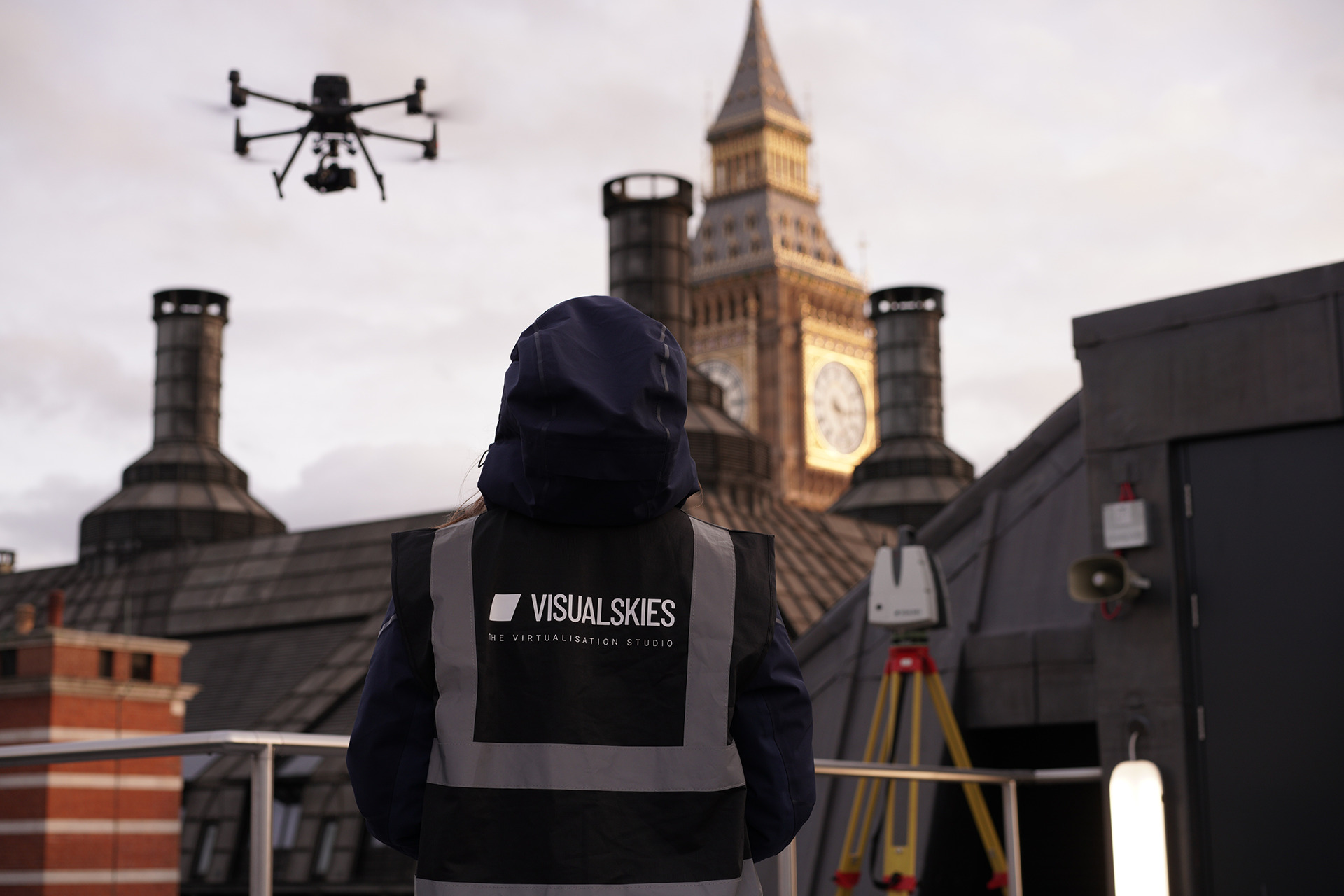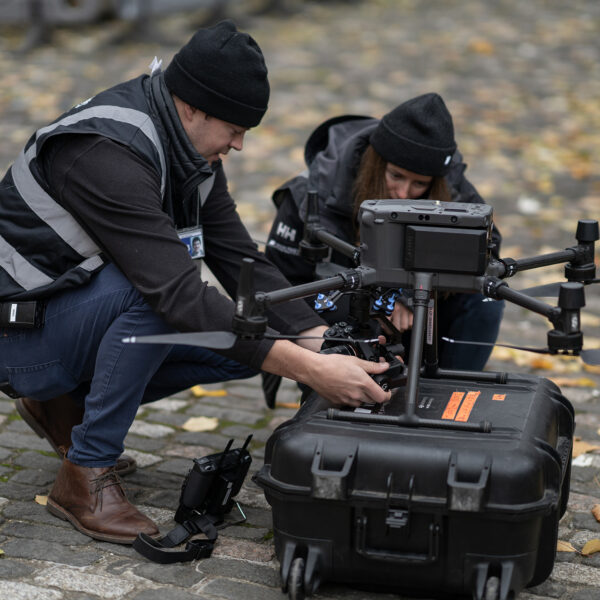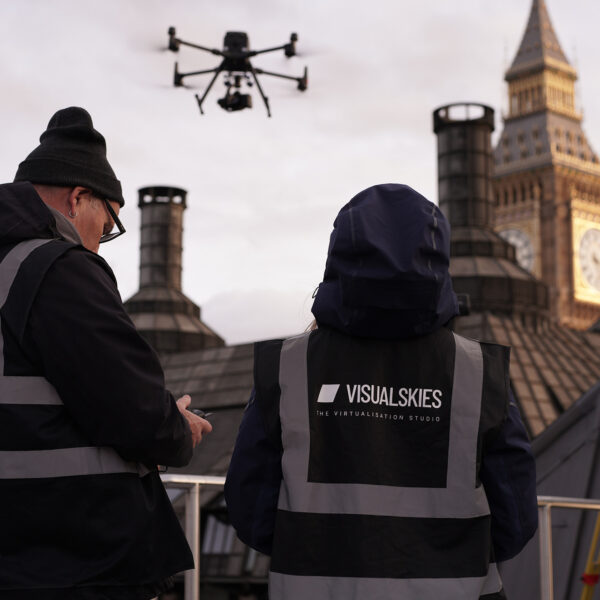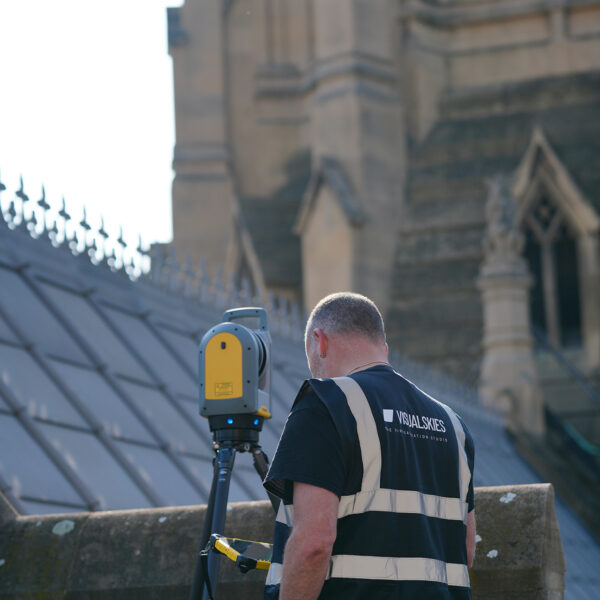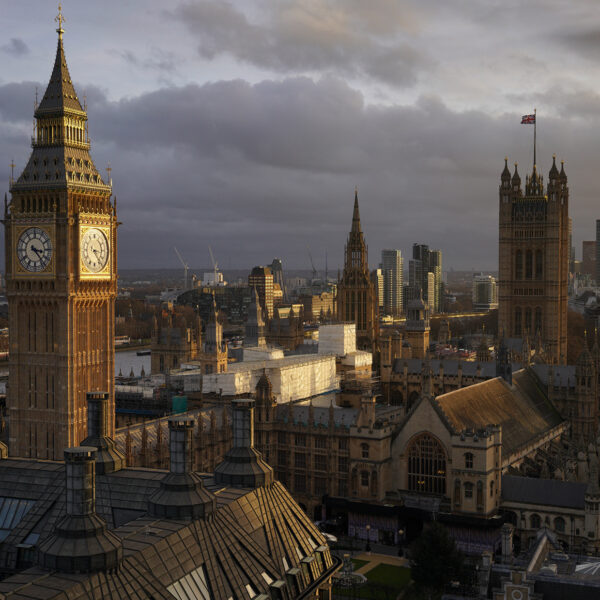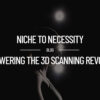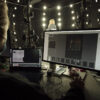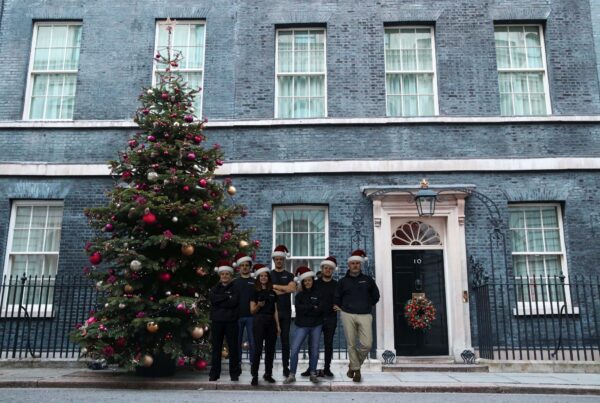DIGITISING OUR HERITAGE
In preserving our rich history, cutting-edge technology and innovative approaches have taken centre stage. One such technique, drone scanning, is significantly transforming the heritage sector. By digitising historical sites, we’re not just aiding in their preservation, but we’re also bringing them to life in a whole new way. Our recent work on Netflix’s Queen Charlotte: A Bridgerton Story, where we had the opportunity to scan various heritage sites across the UK, stands as a testament to this fascinating blend of history and technology. Discover the world of drone scanning for heritage, its sustainability, and the invaluable benefits it provides.
What is the Role of Drone Scanning in Heritage Preservation?
Drone scanning for heritage has become crucial in the preservation of these historical sites. As versatile aerial platforms, drones can carry a range of sensors including high-resolution cameras, multispectral imaging units, and even LiDAR Scanning. This allows them to capture a dynamic range of photographs for sites, metrically accurate data for surveying / restoration and create high resolution 3D models with a wide range of use cases.
Our ability to provide such high-resolution data with minimal physical contact allows for a comprehensive and sustainable examination of historical sites, from buildings and monuments to archaeological sites and landscapes. By reducing the need for physical interaction, drone scanning helps minimise potential damage to these invaluable sites, ensuring their longevity.
With the rise of drones in recent year it has become impossible for organisations involved with heritage projects to ignore them.
Jordan Lost Cities
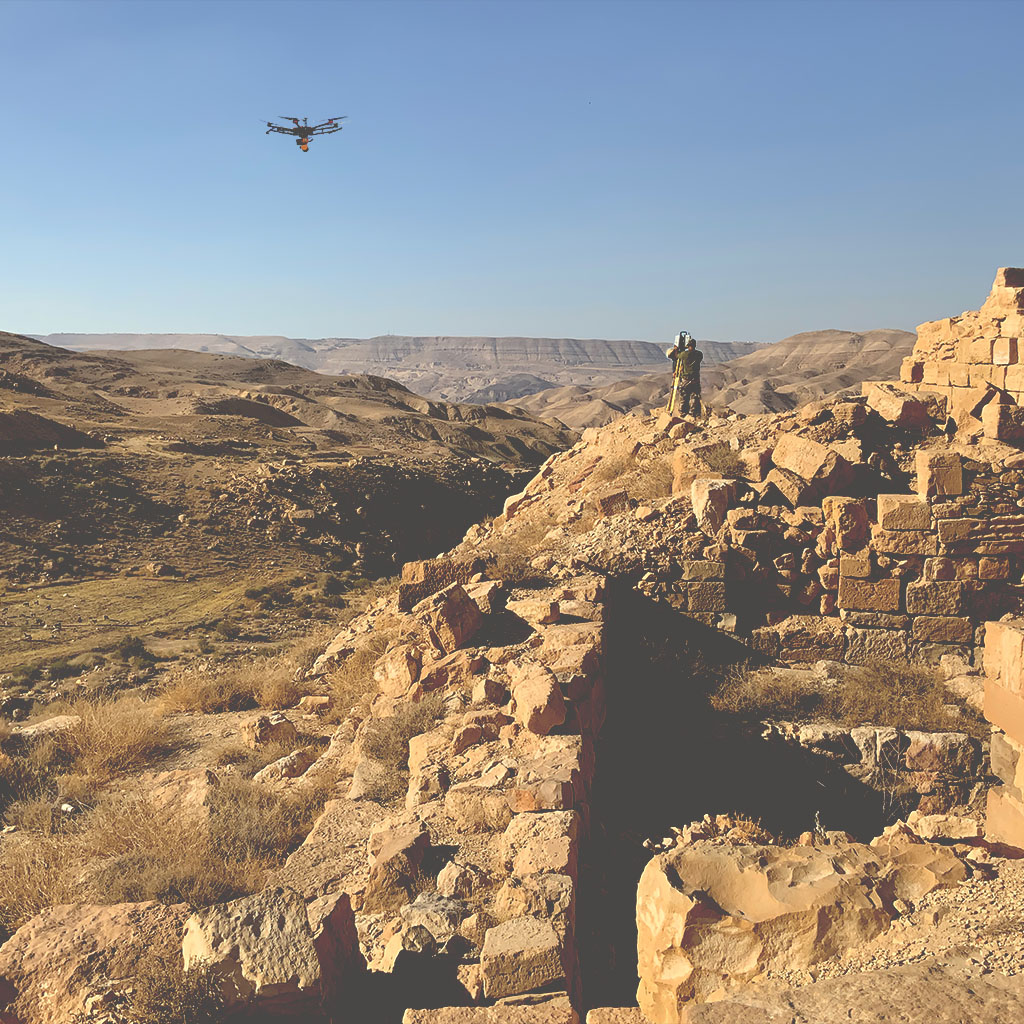
What is the future for heritage revenue streams?
Digitising heritage sites using drone scanning technology isn’t just a tool for the entertainment industry in shows like The Crown or Bridgerton, but it also holds the potential to create new revenue streams and unlock exciting opportunities. Drone scanning for heritage projects and the creation of 3D models provides a wealth of possibilities, from historical research and educational purposes to tourism and virtual reality experiences.
Merchandising For Heritage:
- With the use of 3D printing technology, merchandise such as miniature models or replicas of artefacts from the heritage site could be created and sold. These unique items could be popular among tourists, history buffs, or as educational tools.
Commercial Licensing of 3D Models:
- Heritage sites could license their 3D models to various industries. For instance, video game developers, film production houses, or even educational institutions might need these high-definition models for their projects. By providing commercial licensing, heritage sites can generate a steady income stream.
Immersive Tourism:
- As travel becomes more challenging in today’s world, virtual tourism is emerging as a promising alternative. Heritage sites can offer virtual tours of their facilities, allowing visitors from around the world to explore these historic landmarks in immersive 3D. This not only broadens accessibility to these sites but also opens up a new source of revenue. A fun example could be to explore the crown of King Charles III at his coronation.
Future Historical Research and Education:
- 3D models of heritage sites serve as an excellent resource for historians, researchers, and students alike. With high-quality 3D models, one can explore every nook and cranny of a historic site from the comfort of their own home or classroom, fostering a deeper understanding and appreciation for our shared history. Imagine uk schools being able to take the children into the immersive world of The Romans in VR, centre of the colosseum or exploring the vast amounts of castles in the UK adoring suits of armour.
Expanded Crowdfunding and Donations:
- With a global audience now able to virtually visit these sites, there is an opportunity to tap into a wider donor base for preservation and restoration efforts. A well-executed crowdfunding campaign, or simply an option to donate towards the upkeep of the site, could raise substantial funds.
Smithfield's Restoration Project Render
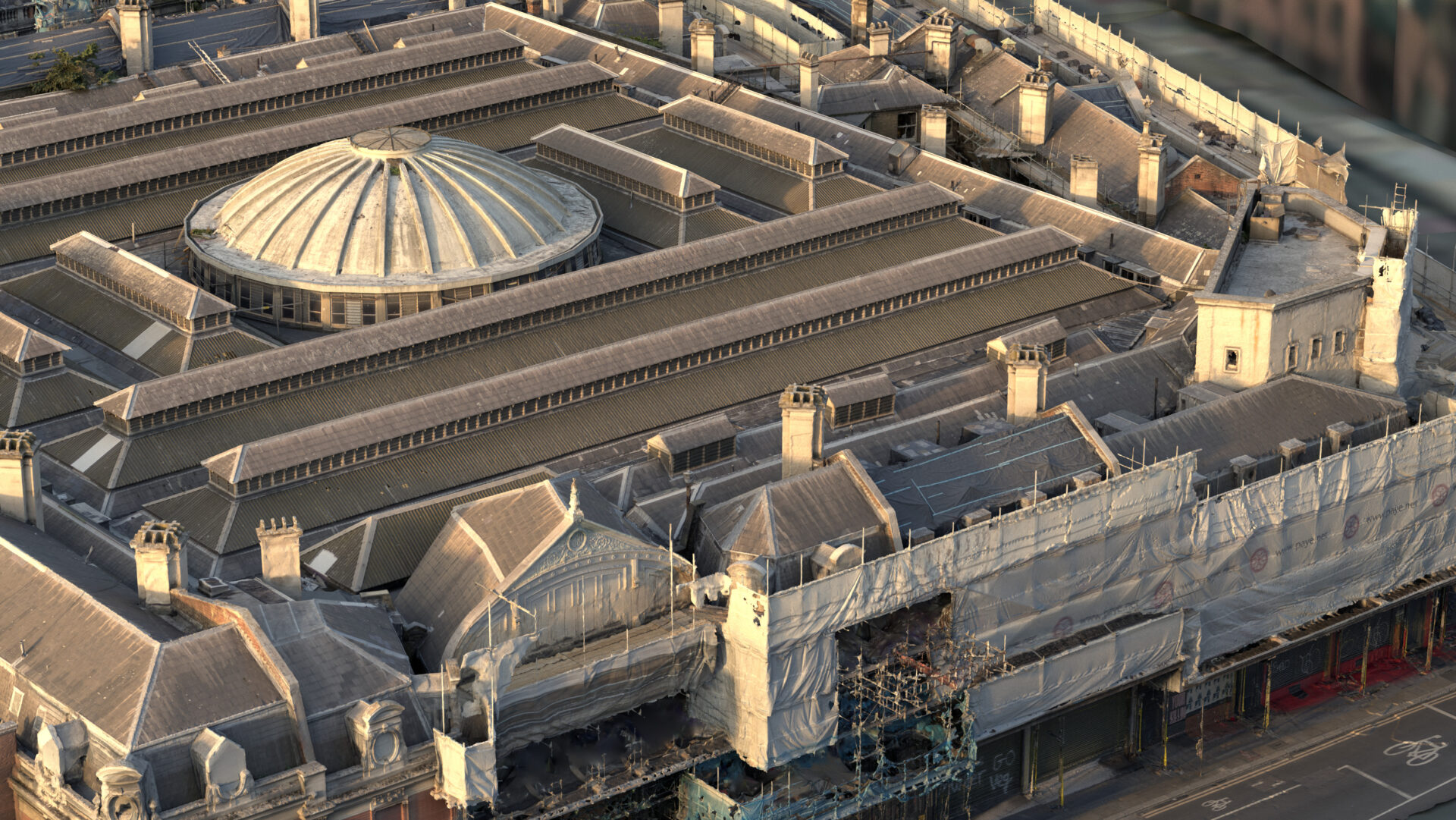
Drone Scanning Heritage in Queen Charlotte: A Bridgerton Story
Embarking on the journey of scanning heritage sites for Queen Charlotte was an enriching experience that our team will always treasure. We traversed the UK, visiting some of its most iconic historical buildings and their surrounding landscapes.
Our drones took to the skies, capturing the grandeur and intricate architecture that make these heritage sites unique. The delicately sculpted gardens were just as prominent as the builds themselves and we felt immense admiration for those who work tirelessly to preserve these priceless pieces of our heritage.
Using drones allowed us to get a unique perspective that many who visit don’t get to see. You really appreciate the symbiotic relationship between the buildings and their landscapes.
Complimenting the Architecture with our Methodology
Our methodology of combining LiDAR with high-resolution photogrammetry played a crucial role in showcasing the subtle architectural elements of these sites. Due to our 3D Models the nuanced details of the carvings and masonry work produced all those years ago were implemented into the series for the world to see.
Heritage Locations We Scanned
Visualskies Preserving Parliament
As the leading force in the scanning segment of the Parliament restoration project, we’ve utilised our drone technology to conduct comprehensive scans of the structure. This approach has not only been innovative but also highly cost-effective, saving UK taxpayers millions that might have otherwise been spent on traditional methods like scaffolding for inspection and maintenance.
Our high-fidelity scans provide a wealth of data, enabling experts to closely examine structural integrity and detect any signs of deterioration. The scans serve as a valuable point of comparison for future evaluations, as the detailed 3D models can be referred to year after year, tracking any changes or potential issues.-
Our Team At Parliament
Victoria Tower Detail Render
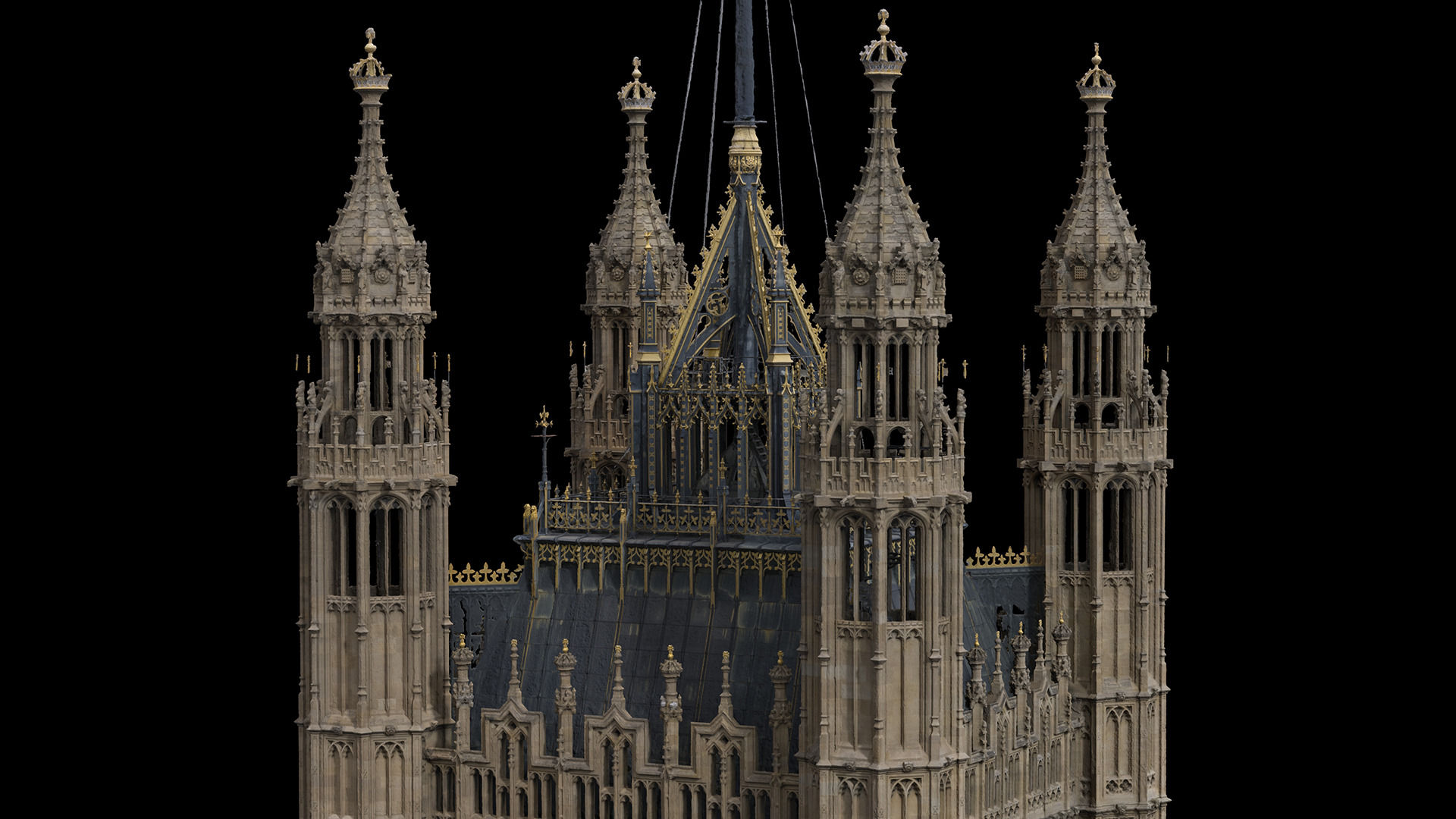
WHERE TO FIND US?
Visualskies is proud to offer our expert Drone scanning services for Heritage across multiple locations worldwide. Our presence in key cities enables us to provide prompt and efficient service to our clients. You can find us in the following locations.
DRONE SCANNING FOR HERITAGE LONDON
5 Havelock Terrace
Battersea
London
SW8 4AS
United Kingdom
